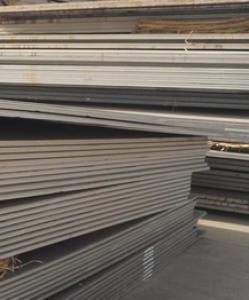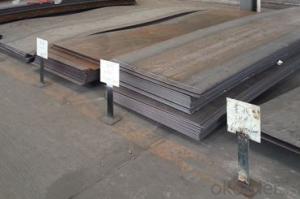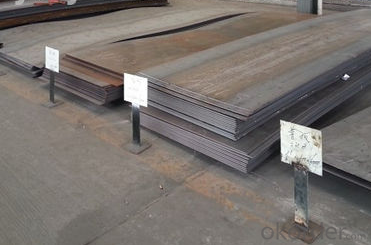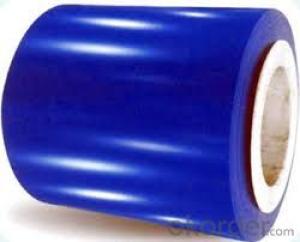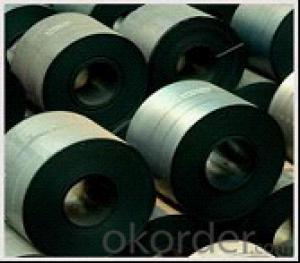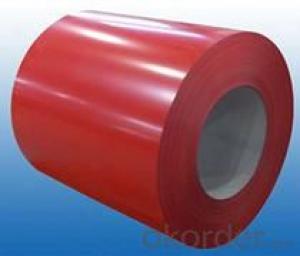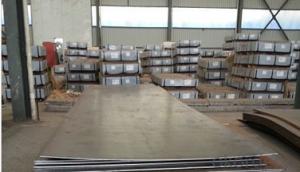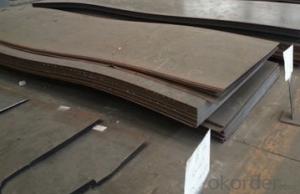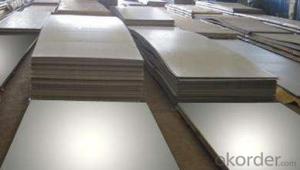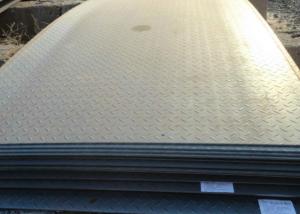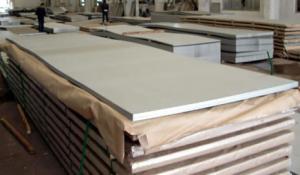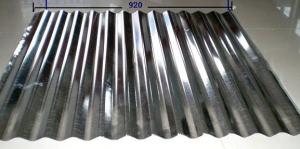Hot Rolled Carbon Steel Plate,Carbon Steel Sheet A573Gr.65CNBM
- Loading Port:
- Qingdao
- Payment Terms:
- TT OR LC
- Min Order Qty:
- 10 pc
- Supply Capability:
- 30 pc/month
OKorder Service Pledge
OKorder Financial Service
You Might Also Like
Quick Details
| Standard: | AISI, ASTM, GB, JIS | Grade: | Q195,Q235,Q345,A36,C45 | Thickness: | 1.0-30MM |
| Model Number: | Q235,Q195,Q345 | ||||
| Type: | Steel Plate | Technique: | Hot Rolled | Surface Treatment: | Coated |
| Application: | Ship Plate | Special Use: | Silicon Steel | Width: | 30-2000mm |
| Length: | as your requirement | standard: | hot rolled | Surface: | Anti-rust oil |
Packaging & Delivery
| Packaging Details: | seaworthy packages or as customers' require |
| Delivery Detail: | within 15 days after the advance payment |
Hot rolled steel plate
1 carbon steel plate 3mm thick General information
| Product name | Type | Specification | Implementation of GB | ||
| thick | wide | long | |||
| Carbon structural steel | Q195,Q215, Q235A,Q235B, Q235C,Q255, Q275 | 4-120 | 1500-4500 | 6000-12000 | GB/T700-2006 |
| Low-alloy structural steel | Q295,Q345A, Q345B,Q2345C | 4-120 | 1500-4500 | 6000-12000 | BG/T1591-1994 |
| Quality carbon structural stee | 30-50 | 4-120 | 1500-4500 | 6000-12000 | BG/T699-1999 |
| Ship steel | CCSA,CCSB | 4-120 | 1500-4500 | 6000-12000 | materials and welding condition |
| CCSAH32,CCSAH36 CCSDH32,CCSDH36 | 4-120 | 1500-4500 | 6000-12000 | materials and welding condition or GB 712-2000 | |
| Boiler steel | 20g,22Mng, 16Mng,19Mng | 4-120 | 1500-4500 | 6000-12000 | GB 713-1997 |
| Pressure vessel steel | 1622Mng,20R, 15MnVR,15MnVNR | 4-120 | 1500-2700 | 6000-12000 | GB 6654-1996 |
| European standard plate
| S235JR,S235J0, S275JR,S275J0, S275JR2,S355JR, S355J0,S355J2 | 4-120 | 1500-4500 | 6000-12000 | EN 10025 |
| Japanese standard plate | SS400,SS400-B | 4-120 | 1500-4500 | 6000-12000 | JIS G3101-2004 |
2 carbon steel plate 3mm thick detail specification
Material:
A283Gr.D/A573Gr.65,A516Gr65,A516Gr70,A284Gr.D
SS400,SS300,CCSB A36,A32,LRA32,LRB,Q235
Q195,Q235,Q345,SS400,ASTM A36,E235B
Thickness: 4mm-120mm
width: 1500mm-4500mm
Length:2-10m ,accordingly
Thickness | 4-120mm |
Width | 1500-4500mm or as custom's request |
Length | 2-12m,as your requirment |
Technique | Cold rolled or hot rolled |
Surface treatment | Bare, galvanized coated or as customer's requirements. |
Standard | ASTM,EN,GB,JIS,GB |
Material | A283Gr.D/A573Gr.65,A516Gr65,A516Gr70,A284Gr.D SS400,SS300,CCSB A36,A32,LRA32,LRB,Q235 Q195,Q235,Q345,SS400,ASTM A36,E235B |
Terms of Payment | L/C or T/T |
Chemical composition | C≤0.004%;Si≤0.030%; Mn ≤0.17%;P≤0.012%; S≤0.010%; Fe balance |
Delivery Detail | within 30days once receive deposite or confirm L/C |
Packing | Standard export packing,or as requirement |
3 carbon steel plate 3mm thick application:
construction,machinery manufacturing, container manufacturing, shipbuilding, bridge construction. Can also be used to manufacture a variety of containers, the furnace shell, furnace plate, bridge and vehicle static steel plate, low alloy steel plate,shipbuilding plate, boiler plate, pressure vessel plate, pattern plate, tractor parts, automobile frame steel plate and welding components
- Q: What is the difference between a painted and laminated steel sheet?
- Both a painted steel sheet and a laminated steel sheet belong to the category of steel sheets, but they offer distinct characteristics and applications. A painted steel sheet is a sheet of steel that has been coated with a layer of paint. This layer of paint serves two purposes: it protects against corrosion and enhances the sheet's appearance. The paint can be customized in terms of color and finish, allowing for versatility in design. Architectural applications, such as roofing, siding, and wall cladding, as well as the automotive and appliance industries, commonly utilize painted steel sheets. However, it is important to periodically maintain the paint layer to ensure its durability and appearance. On the other hand, a laminated steel sheet is created by bonding multiple layers of materials together. Typically, it consists of a steel core and one or more additional layers, such as plastic, polymer, or resin. The lamination process significantly strengthens and enhances the durability and performance of the steel sheet. These laminated steel sheets are highly resistant to impact, scratching, and chemical exposure, making them suitable for applications that require superior mechanical strength and protection. Industries such as transportation, construction, and industrial equipment manufacturing often utilize laminated steel sheets. Additionally, the laminate layers can provide added functionalities such as sound insulation, thermal insulation, or fire resistance. In conclusion, the main distinction between painted and laminated steel sheets lies in their composition and intended purpose. Painted steel sheets prioritize aesthetics and corrosion protection, while laminated steel sheets prioritize strength, durability, and specialized functionalities. The choice between the two depends on the specific requirements of the given application.
- Q: Can steel sheets be used for solar panel mounting systems?
- Yes, steel sheets can be used for solar panel mounting systems. Steel is a durable and strong material, making it suitable for providing structural support and stability to the solar panels. Additionally, steel sheets can be easily customized and shaped to fit the specific requirements of the solar panel installation.
- Q: Are steel sheets suitable for sports stadiums or arenas?
- Yes, steel sheets are suitable for sports stadiums or arenas. Steel is a strong and durable material that can withstand heavy loads and provide structural support. It is commonly used in the construction of large-scale buildings like sports stadiums due to its strength, versatility, and cost-effectiveness. Additionally, steel sheets can be customized to meet specific design requirements and can be easily assembled on-site, making them an ideal choice for sports stadium construction projects.
- Q: How are steel sheets protected during cutting and fabrication?
- Steel sheets are protected during cutting and fabrication through various methods to ensure their quality and prevent damage. One common way to protect steel sheets is by using a process called "galvanizing". Galvanizing involves applying a protective zinc coating to the surface of the steel sheet, which acts as a barrier against corrosion and other forms of damage. This process is particularly effective in outdoor environments where steel sheets are exposed to moisture and other harsh elements. Another method of protection during cutting and fabrication is the use of lubricants or coolants. These substances are applied to the cutting tools and the steel sheet itself to reduce friction and heat generation. By minimizing heat, lubricants and coolants help prevent the steel sheet from warping or distorting during the cutting and fabrication process. Furthermore, during the fabrication of steel sheets, they are often covered or masked with protective films or tapes. These films or tapes act as a shield against scratches, abrasions, and other forms of physical damage that may occur during handling or transportation. In addition to these methods, proper handling and storage practices are also crucial for protecting steel sheets during cutting and fabrication. Steel sheets should be stored in a controlled environment to prevent exposure to moisture, extreme temperatures, or other damaging elements. They should also be handled with care to avoid any impact or bending that could compromise their structural integrity. Overall, steel sheets are protected during cutting and fabrication through a combination of surface coatings, lubricants or coolants, protective films or tapes, and proper handling and storage practices. These measures help ensure the quality and durability of the steel sheets, allowing them to maintain their integrity throughout the fabrication process and beyond.
- Q: Can steel sheets be used in architectural or decorative applications?
- Yes, steel sheets can definitely be used in architectural or decorative applications. Steel is a versatile and durable material that offers numerous benefits for both structural and aesthetic purposes. In architectural applications, steel sheets can be used for roofing, wall cladding, and structural framing, providing strength, stability, and resistance to harsh weather conditions. Additionally, steel sheets can be fabricated into various shapes, sizes, and finishes, allowing architects and designers to create unique and visually appealing structures. In decorative applications, steel sheets can be used for interior and exterior design elements such as decorative panels, screens, railings, and sculptures. The ability to customize steel sheets with various patterns, textures, and colors makes them a popular choice for enhancing the visual appeal of buildings and spaces. Overall, steel sheets are a versatile material that can be utilized in a wide range of architectural and decorative applications, offering both functionality and aesthetics.
- Q: Can the steel sheets be used as a magnetic surface?
- Yes, steel sheets can be used as a magnetic surface. Steel is a ferromagnetic material, which means that it can be magnetized and will retain its magnetism even after the magnet is removed. This property allows steel sheets to attract and hold magnetic objects. Steel sheets are commonly used as magnetic surfaces in various applications, such as magnetic boards, magnetic whiteboards, and magnetic organizers. By using magnets, you can easily attach notes, documents, and other magnetic objects onto steel sheets, making them a convenient and versatile tool for organization and display.
- Q: Can steel sheets be used for manufacturing shipping containers?
- Yes, steel sheets can be used for manufacturing shipping containers. Steel is a common material choice for shipping containers due to its strength, durability, and ability to withstand harsh environmental conditions. Steel sheets are used to construct the walls, floors, and roofs of shipping containers, providing a secure and reliable structure for transportation and storage purposes.
- Q: What is the thickness range of steel sheets?
- The thickness range of steel sheets can vary depending on the specific type and intended use, but it generally ranges from around 0.4 millimeters to 6 millimeters.
- Q: What are the different types of steel sheet coatings?
- There are several different types of steel sheet coatings available in the market, each with its own unique properties and advantages. Some of the most common types include: 1. Galvanized Coating: This is one of the most widely used coatings for steel sheets. It involves applying a layer of zinc to the surface of the steel, which provides excellent corrosion resistance and protects the steel from rusting. Galvanized coatings are commonly used in outdoor applications such as roofing, fencing, and automotive parts. 2. Galvannealed Coating: Similar to galvanized coating, galvannealed coating also involves applying a layer of zinc to the steel surface. However, in this process, the coated steel is passed through a high-temperature annealing process, which forms a coating of iron-zinc alloy. This type of coating offers enhanced paintability and weldability, making it ideal for applications that require subsequent painting or welding. 3. Aluminized Coating: Aluminized coatings involve applying a layer of aluminum to the steel surface. This provides excellent heat resistance and corrosion resistance, making it suitable for applications that involve high temperatures, such as exhaust systems and ovens. Aluminized coatings also have good reflectivity properties, making them useful in reflective insulation applications. 4. Organic Coatings: There are various organic coatings available for steel sheets, including epoxy, polyester, and polyurethane coatings. These coatings are often applied in the form of paints or powder coatings and provide a protective layer that enhances the steel's durability and appearance. Organic coatings can be customized to offer specific properties, such as UV resistance, chemical resistance, or decorative finishes. 5. Tin Coating: Tin coatings are commonly used in the food packaging industry. They provide a barrier between the steel sheet and the food product, preventing any interactions that could affect the food's quality or safety. 6. Other Specialty Coatings: There are several other specialty coatings available for specific applications. These include zinc-nickel coatings, which offer enhanced corrosion resistance, and ceramic coatings, which provide high-temperature resistance and excellent electrical insulation properties. Overall, the choice of steel sheet coating depends on the specific requirements of the application, such as corrosion resistance, heat resistance, or aesthetic appeal. It is important to carefully consider the properties of each coating type to ensure the best performance and longevity of the steel sheet in its intended use.
- Q: Can steel sheets be used in food processing industries?
- Indeed, steel sheets find applicability in the realm of food processing industries. The utilization of stainless steel sheets is widespread in these industries owing to their myriad advantageous characteristics. Stainless steel, being impervious to corrosion, is of utmost importance in an environment where food is processed, as it effectively prevents contamination and guarantees the safety of the final product. Moreover, steel sheets are easily cleaned and maintained, rendering them the ideal choice for industries that prioritize hygiene. Furthermore, stainless steel exhibits non-reactivity towards food, thereby eliminating the risk of harmful chemical leaching into the processed food. The versatility of steel sheets is evident in their various applications within food processing industries, ranging from countertops, worktables, shelving, to equipment surfaces.
Send your message to us
Hot Rolled Carbon Steel Plate,Carbon Steel Sheet A573Gr.65CNBM
- Loading Port:
- Qingdao
- Payment Terms:
- TT OR LC
- Min Order Qty:
- 10 pc
- Supply Capability:
- 30 pc/month
OKorder Service Pledge
OKorder Financial Service
Similar products
Hot products
Hot Searches
Related keywords

